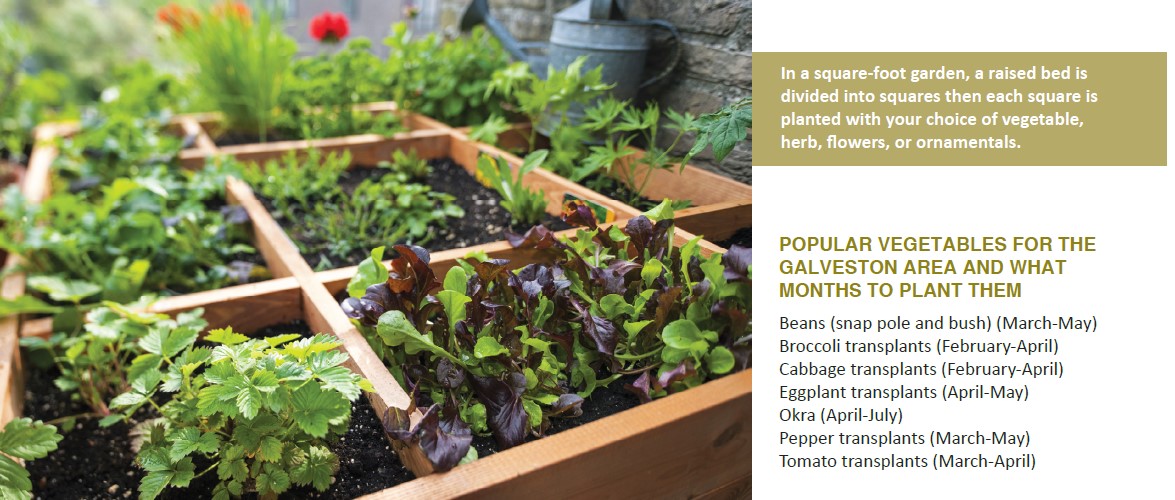“Vegetable gardening is an exciting and enjoyable hobby that provides the home gardener with a chance to get outdoors, to learn about, to enjoy nature, and produce a harvest of delicious homegrown vegetables. We can actually see the results of our labors materialize into something of real value.”
The National Gardening Association reported that in recent years there has been a significant shift toward more Americans growing their own food in home and community gardens, increasing from 36 million households to 42 million in a span of five years. This translates to one in three households now growing foodstuffs, and 76 percent of all households with a garden now growing vegetables. The increase represents the highest level of food gardening in more than a decade.
With careful planning and some imagination, even a household with a small yard and little extra space for a conventional garden can enjoy the rewards of growing vegetables. One option is to plant vegetables among the flowers and ornamentals of your existing flowerbeds; many crops have attractive blooms and their foliage will complement the vegetation in the current beds.
The second option is the construction of a “square-foot” garden. In this garden, a raised bed is divided into squares. Each square is planted with your choice of vegetable, herb, flowers, or ornamentals. Tall plants placed in the rear section of the garden and shorter plants in the front squares are recommended.
Because the garden is raised and divided into sections, maintenance and harvesting is nearly effortless for the gardener. With a square-foot garden, small children as well as older adults can enjoy the gardening experience easily without overextending perhaps limited energy.
Container gardening is another option for those with restricted space. Many types of containers can be used in this approach, from tomato plants in five-gallon buckets to nursery pots and old whiskey barrels - get creative.
Some important tips for container gardening: Use commercial soils that are clean and free of disease; add sufficient holes to the bottom of the container to allow good drainage; use water soluble fertilizers frequently to ensure healthy growth; and remember that container gardens require more frequent watering.
Some early preparations for the spring gardening season will bring benefits that will last all year. Before planting, prepare the beds by digging and loosening the soil and adding organic material. This prep work can save future disappointment and assure a bountiful harvest.
Organic matter is the key to a healthy garden as it helps improve whatever soil to which it is added. Replenish the garden at the start of each growing season to maintain its viability.
Organic materials include Nitrogen (N): 2 parts blood meal –OR– 3 parts fish meal, Phosphorus (P): 3 parts bone meal, and Potassium (K): 1 part kelp meal –OR– 6 parts greensand. If using manure, it should be composted (not fresh) to prevent the spread of pathogens and so it will not burn plants.
If contemplating a spring vegetable garden, now is the time to organize, plan, and prepare. Join the millions of families who have discovered the rewards, gratification, and pleasure of growing and consuming a fresh and homegrown harvest.
POPULAR VEGETABLES FOR THE GALVESTON AREA (AND WHEN TO PLANT)
Beans (snap pole and bush) (March-May)
Broccoli transplants (February-April)
Cabbage transplants (February-April)
Eggplant transplants (April-May)
Okra (April-July)
Pepper transplants (March-May)
Tomato transplants (March-April)
COMPANION PLANTS Grow these vegetables in close proximity to one another
Carrots—Broccoli—Cauliflower—Radishes
Lettuce—Cabbage—Cauliflower—Radish—Spinach—Carrots—Cucumber—Onions
Tomato—Eggplant—Okra—Peppers—Carrots—Onions
HERBS FOR GALVESTON GARDENS
Basil- Full sun; varieties include Anise (smells like licorice), Cinnamon (a spicy fragrance), Lemon
Chives- Part shade; garlic flavor; foliage is flat and strappy
Oregano- Full sun; varieties include Golden (mild flavor), French (sharp and pungent flavor), Winter (sweet and spicy taste)
Rosemary- Full sun; can grow as a bushy shrub of five feet tall and wide; fragrant
Sage/Salvia- Full sun to partial shade; varieties include Pineapple, Prostrate (balsamic flavor), Purple or Red (very strong flavor)
MINTS FOR GALVESTON GARDENS
Spearmint- Strong sweet scent with lavender flower spikes
Curly Mint- Thick upright stalks; fragrant aroma and sweet flavor
Chocolate Mint- Requires morning sun but afternoon shade

FACTS ABOUT VEGETABLES
Basil is a great source of vitamin A, magnesium, potassium and iron.
Bell peppers are a great source of vitamin C. They contain twice as much (by weight) as citrus fruits. Green sweet bell peppers have twice the vitamin C of oranges. Red and yellow bell peppers have four times as much.
Broccoli and cauliflower are the only vegetables that are also flowers. Ounce for ounce, broccoli has more vitamin C than an orange and as much calcium as a glass of milk.
The normal color of carrots is purple. The orange carrot is the type that we all know and love and so it is the carrot that we grow.
Cilantro is a member of the carrot family.
Cucumbers have the highest water content of any vegetable.
Eggplants are members of the potato family.
Squash is actually a fruit and a great source of beta carotene.
THE VICTORY GARDEN
First promoted in World War I and throughout World War II, the Victory Garden was an attempt to include Americans in the war effort. War-time vegetable gardens were planted in backyards, city parks, and playgrounds to increase food production.
The Victory Garden campaigns were an inspirational and successful means of “boosting morale, expressing patriotism, and safeguarding against food shortages on the home front.” Home gardeners were encouraged to not only provide their own fruits and vegetables but to also can vegetables and fruit for their family’s use.
The primary goal in encouraging this endeavor was to lessen the burden on commercial farmers who were striving to feed troops and civilians overseas with fresh and commercial canned provisions.